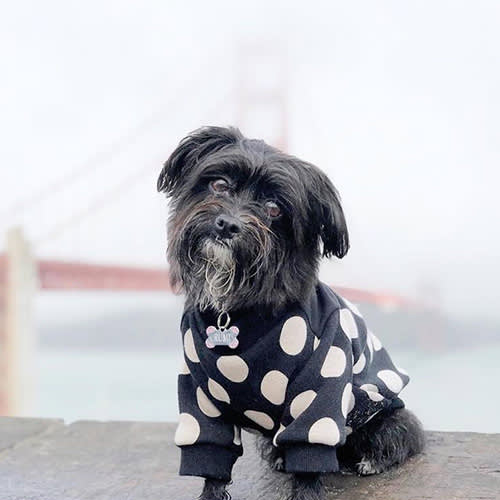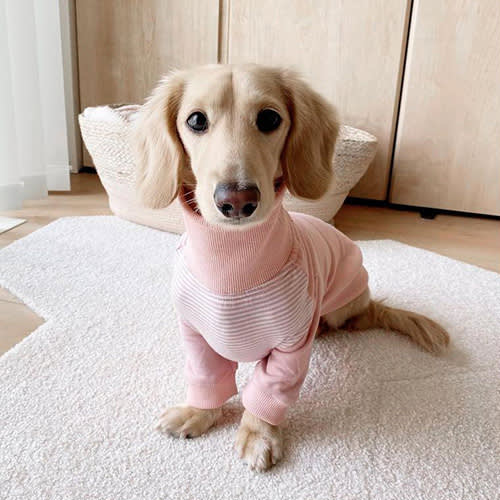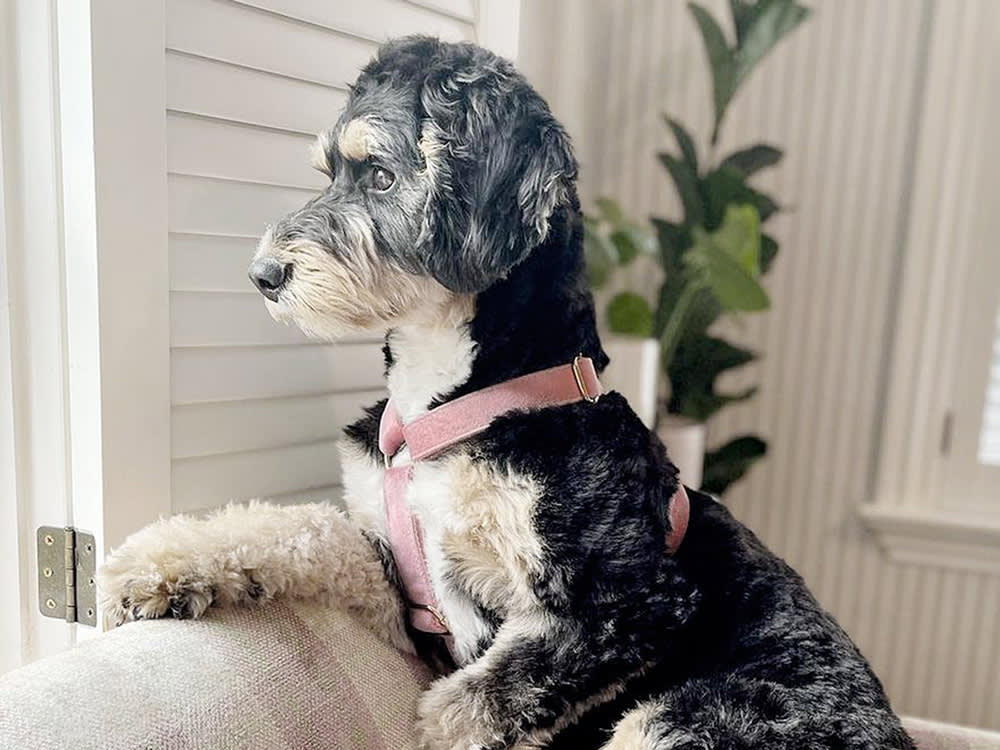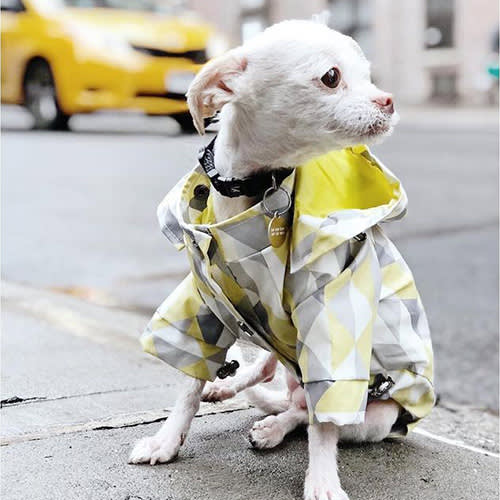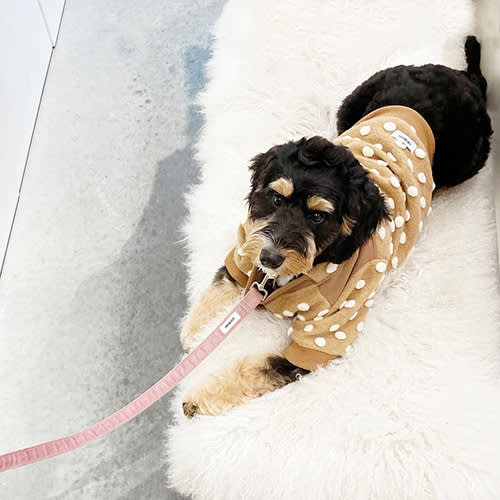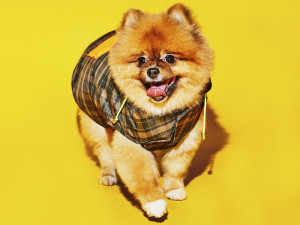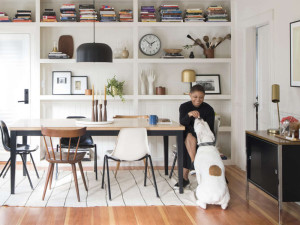Why Peter Som Alum Rita Li Started Designing Dog Clothes
The fashion designer on her high-fashion inspirations, pivoting from ready-to-wear to dogwear, and running a brick-and-mortar boutique in the Bay Area.
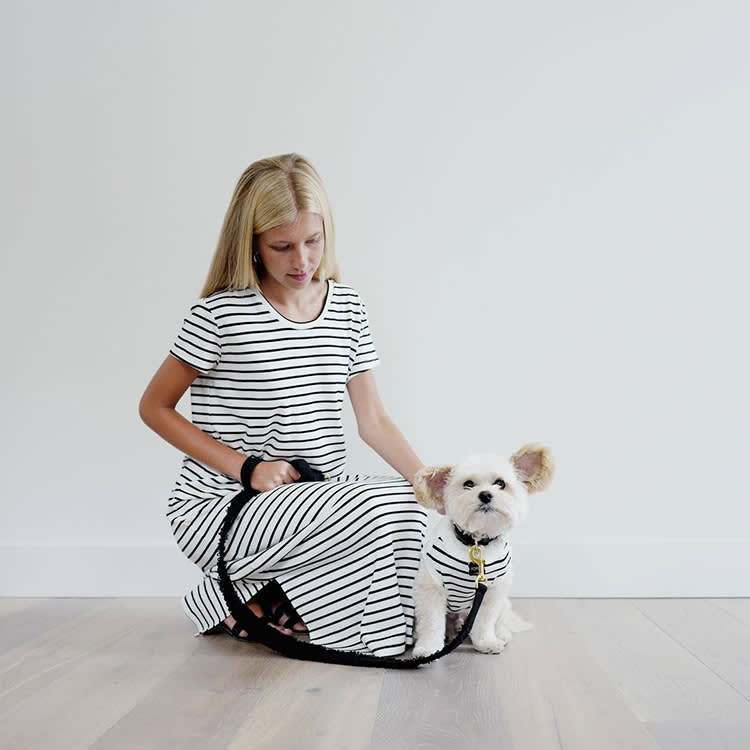
share article
As more individuals wise up to the destructiveness of fast fashionopens in a new tab in their own wardrobes, it has become more and more popular for pet parents to consider the longevity of garments they purchase for their pets. Mere inches off the ground and/or subject rough-and-tumble treatment, pet clothing is more likely to experience wear and tear than ours is, adding to the need for something well made. Counterintuitively, the standards for pet garments have long been subpar.
When fashion designer and former Peter Som apprentice Rita Li got a dog of her own, Rosie, she discovered that the standards for pet garments have long been subpar — in not only quality, but also style. So, she decided to start her own brand, r oroririopens in a new tab. Inspired by such high-fashion designers as Alexander McQueen and Azzedine Alaïa, Li has since created everything from polka dot-printed cardigans to camo windbreakers to velvet harnesses with brass hardware — all made locally in San Francisco from sustainable fabrics. Below, we chat with Li about pivoting from ready-to-wear to dogwear and running a brick-and-mortar boutique in the Bay Area.
Your background is in womenswear. Can you tell me about the challenges you faced when first approaching dogwear?
Back in 2015, before I launched rororiri, I had a hard time looking for the right manufacturer that would take my production seriously. I remember visiting a workshop in San Francisco; I showed the manager and seamstresses the samples I made, demonstrated the detail I wanted, and they thought I was joking. They didn’t realize how serious I was about making high-quality pet clothing.
Are there any specific principles you learned in your design education, or your time apprenticing with Peter Som, that have particularly helped with designing dogwear?
Being true to yourself as a designer and putting in the hard work. I’d say everything I learned in art school is applied to my business on a daily basis, and the apprenticeship at Peter Som was such an eye-opening experience. I think we can talk about designing fabulous clothes all day — however, without hard work and resilience, a brand can’t survive; a business won’t last.
Were there any particular styles or fabrics you hadn’t seen in dogwear before that you were eager to try out when you first started rororiri?
The reason I started making clothes for my dog Rosie was because I couldn’t find a cute and chic outfit with a hole for the harness in the back. It was a small detail, but it was important for me and Rosie (when she was a puppy, she pulled as she walked). I made one outfit after another; the rest is history.
You have a number of styles that are available for both dogs and humans. What has the reaction been like (in-store or otherwise) to those?
The result has been fantastic! We launched our human and dog matching collection last year. We have unisex wear, womenswear, and menswear. It brings me so much happiness seeing an entire family shopping with their dog and shopping for their friends and family. Many customers have requested matching styles for their human babies as well.
Dog clothing is even more complicated when it comes to making patterns for the different shapes and sizes of various breeds. What was it like overcoming this hurdle?
There are 11 sizes for some of our styles, and I’m still working on more fits. I think this is a never-ending hurdle.
Are there any womenswear brands that your own designs are inspired by?
There are a few designers I admire the most: Alexander McQueen, Raf Simons, Cristóbal Balenciaga, Azzedine Alaïa.
I know you pay close attention to the textiles you use for your garments. Do you consider sustainability when choosing these and figuring out other details of their production?
Absolutely. There are many beautiful and extravagant-looking textile choices out there, but as I learn about their fabric contents, I sometimes pass. I mainly stick to cotton and wool fabrics — textiles with natural fiber as their main content. I don’t use animal leather for my designs.
Does your dog Rosie have a particular shirt she ends up sporting most often?
Rosie is kind of extreme — she changes her outfits a few times a day because we live in the Bay Area; we have four seasons in one day.
I love that you have a storefront, not just e-comm. What has the experience been like getting to meet your different customers (both dogs and humans)?
Customers have touched my heart in every possible way since we opened our first brick-and-mortar store in San Francisco back in 2016. Seeing the garments on the dogs is truly the biggest joy! I also get to hear so many wonderful stories about customers’ dogs, how they meet/adopt their dogs, etc. It always makes my day when online customers from far away plan a rororiri store visit into their itinerary when they visit the Bay Area. I get to meet them in person!
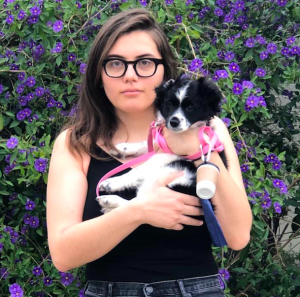
Rachel Davies
Rachel Davies is a writer who has written for numerous publications including Vox, Wall Street Journal, and Architectural Digest and the parent of a beautiful Cocker Spaniel mix named Thea.
Related articles
![A happy looking dog with a jacket on.]() opens in a new tab
opens in a new tabWare of the Dog Isn’t Trying to Be Cute
Designer Jackie Rosenthal on how to dress your dog when you still miss Phoebe Philo’s Celine.
![Woman seated on outdoor modern white chairs petting older bulldog laying on its side beneath her]() opens in a new tab
opens in a new tabMillennials Are Wild About Maxbone
Founder Parisa Fowles-Pazdro on creating modern pet gear from sustainable jackets to superfood treats, collaborating with buzz-worthy designers like Christian Cowan, and what’s next (cats?!).
![A dog with a cloud sweater from Little Beast dog clothing staring at the clouds]() opens in a new tab
opens in a new tabThe Best Dressed Dogs Are Wearing Little Beast
Founder Jisu Kim on designing sweaters you’ll wanna steal from your dog.
![A woman sitting at a dining room table with a dog.]() opens in a new tab
opens in a new tabHouse Dogge Makes Sustainability Feel Effortlessly Cool
Former Nike Design Director Angela Medlin on applying her streetwear savvy to eco-conscious pet products.
